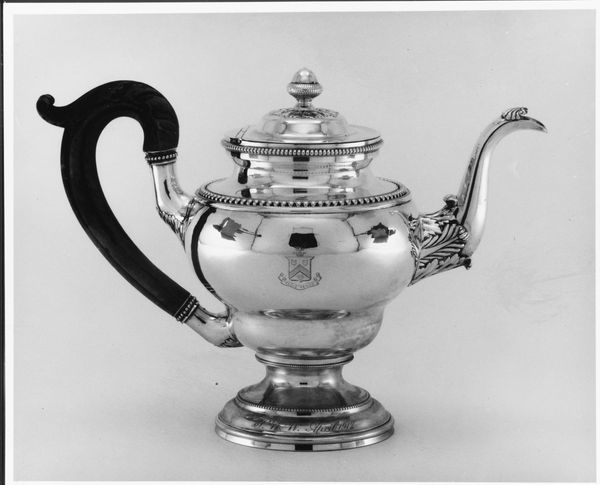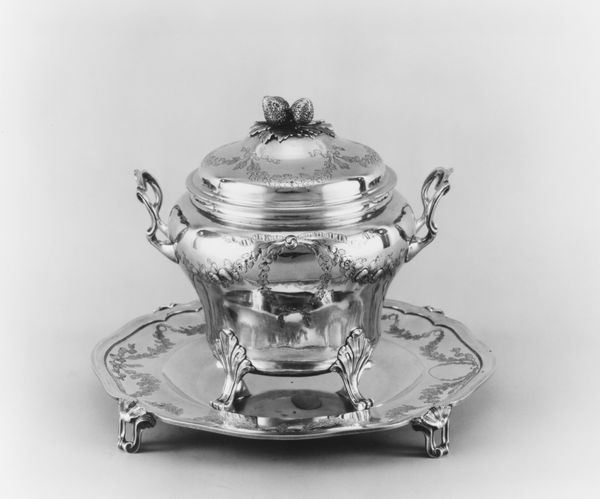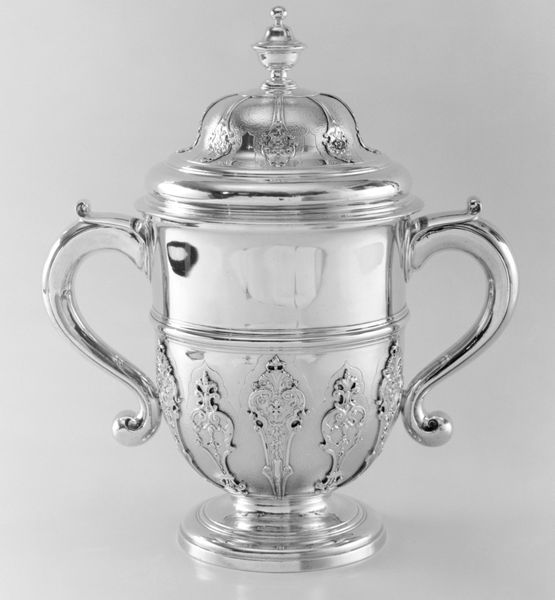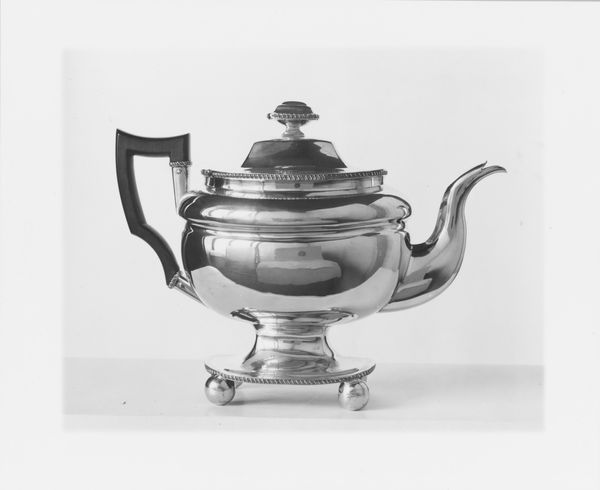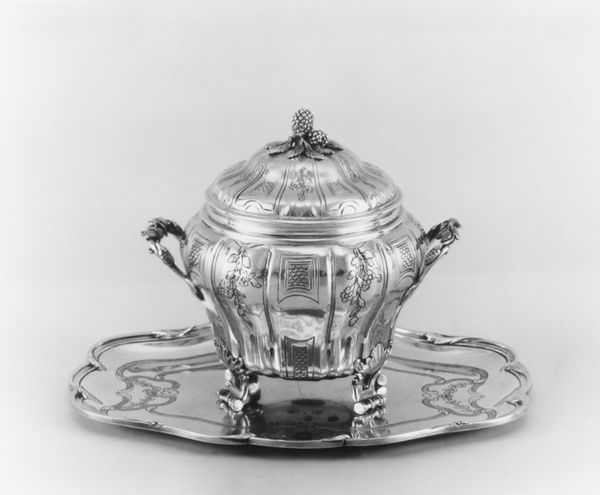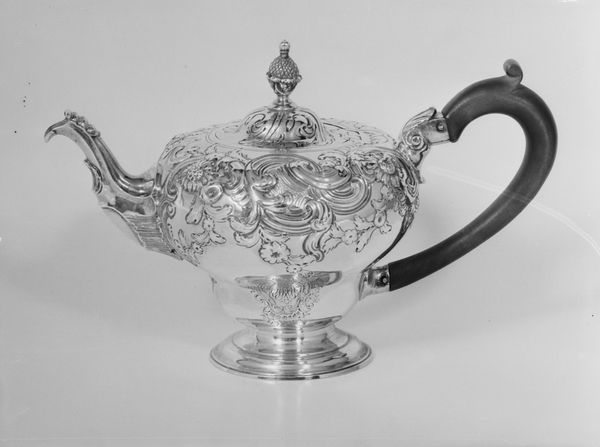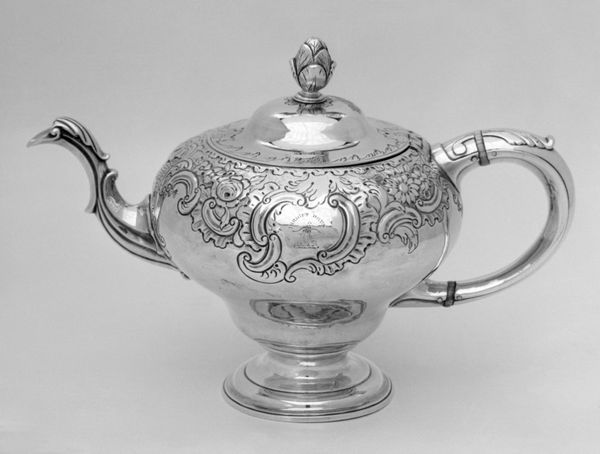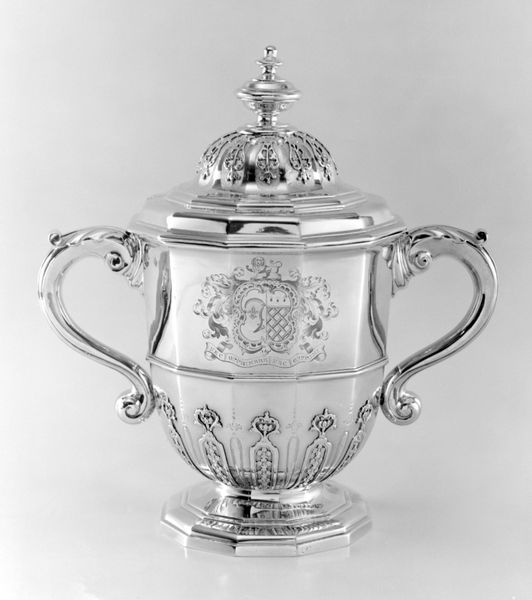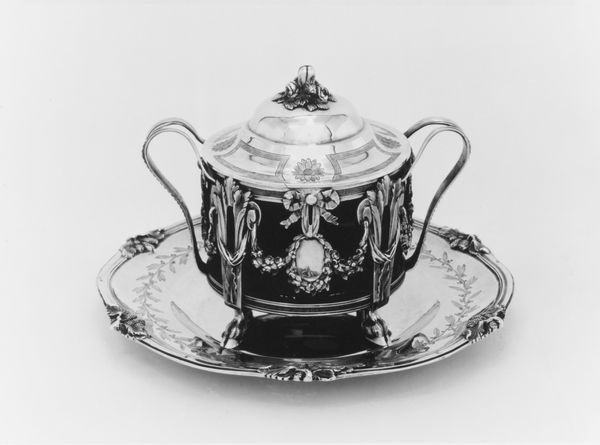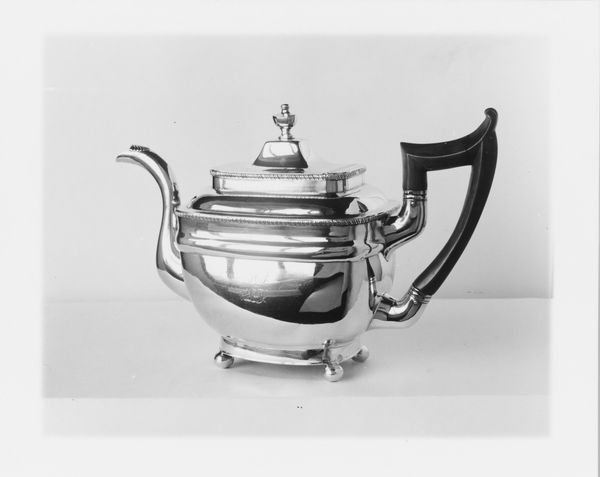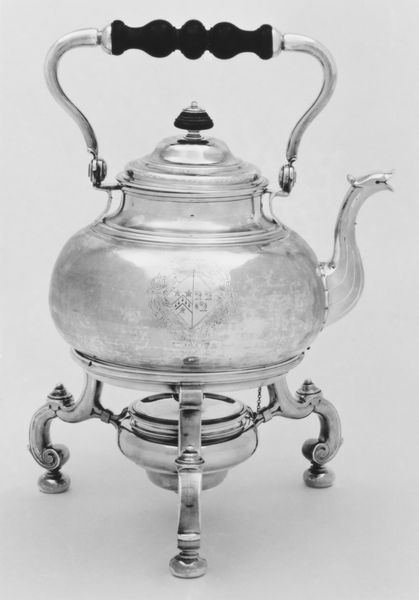
silver, metal, sculpture
#
portrait
#
neoclacissism
#
silver
#
metal
#
stoneware
#
geometric
#
sculpture
#
black and white
Dimensions: Overall: 7 7/8 x 7 7/16 x 5 1/2 in. (20 x 18.9 x 14 cm); 24 oz. 11 dwt. (762.8 g) Foot: Diam. 3 3/4 in. (9.5 cm) Body: H. 6 1/4 in. (15.9 cm); 20 oz. 11 dwt. (639.4 g) Cover: 3 oz. 19 dwt. (123.4 g)
Copyright: Public Domain
This sugar bowl was made by Harvey Lewis, a silversmith active in Philadelphia in the early 19th century. It’s made of silver, obviously, but that simple statement belies a great deal of complexity. Consider the labor involved in extracting the raw material from the earth, and the even more specialized work of refining, alloying, and forming it. The bowl’s surface is brought to a mirror finish, reflecting light, which creates an undeniable sense of luxury. Notice the beaded trim, the cast handles, and the engraved coat-of-arms. Each of these details would have required specialized skills and tools. The sugar bowl speaks to the emerging culture of domesticity and refinement in early America. While it might be tempting to dismiss such an object as merely decorative, it is, in fact, a testament to the intricate web of human labor and material transformation that underpins our everyday lives. It invites us to consider the relationship between artistry, industry, and the social rituals of consumption.
Comments
No comments
Be the first to comment and join the conversation on the ultimate creative platform.
